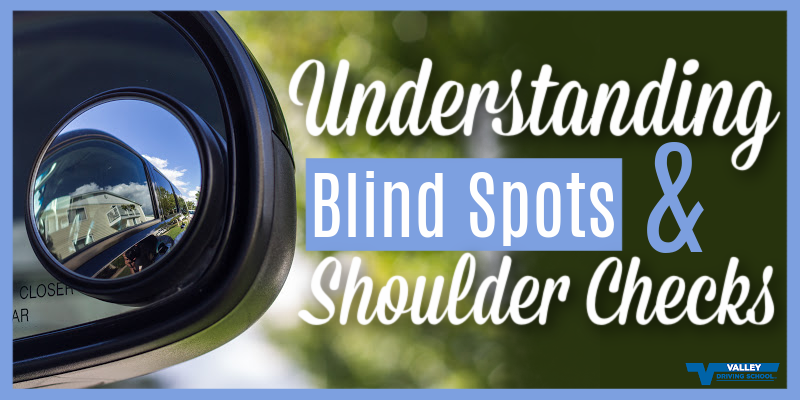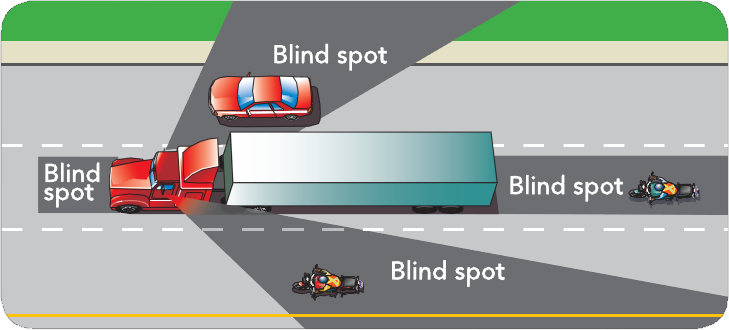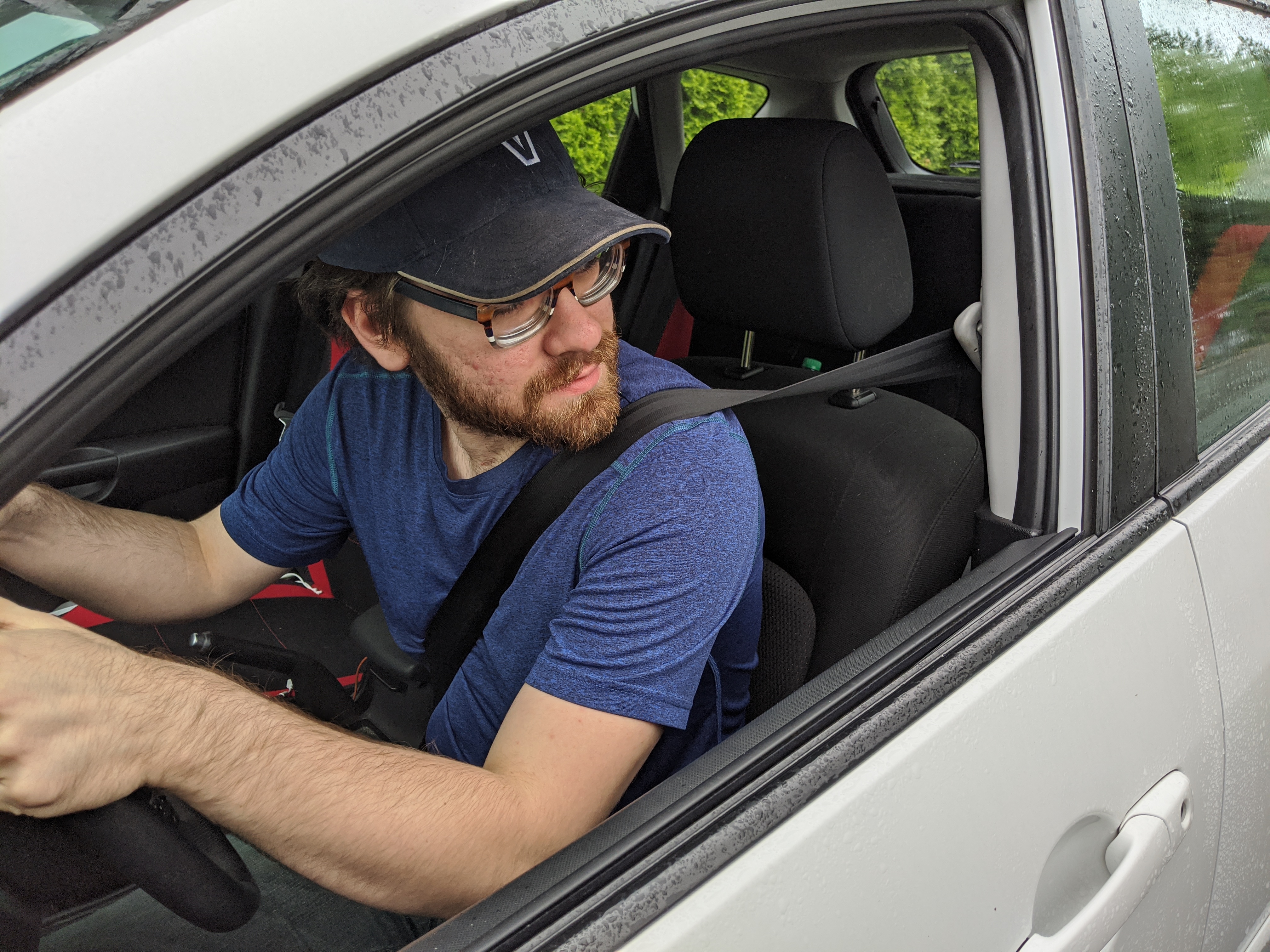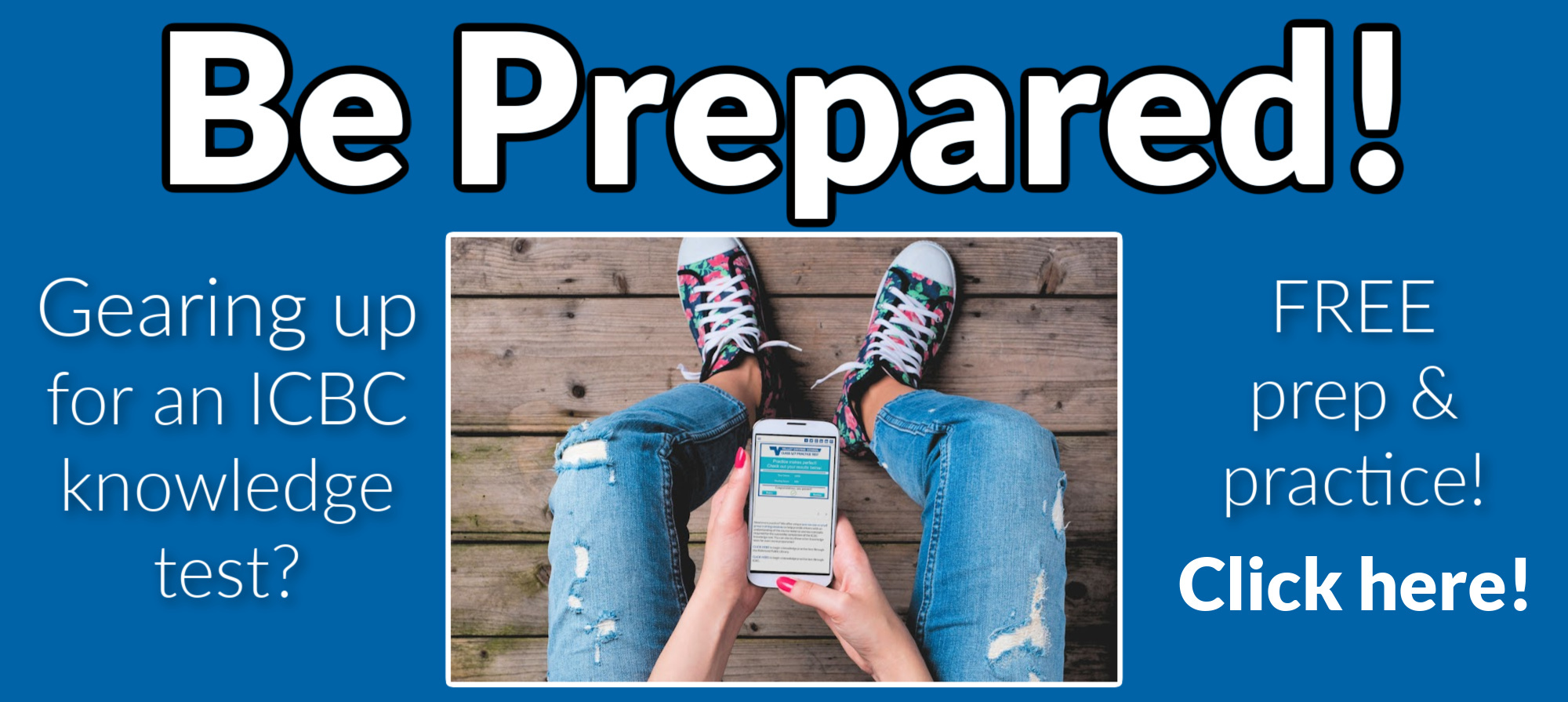Driving is full of different maneuvers that, when completed correctly and appropriately, all come together to make safe and confident drivers. Knowing why and how these maneuvers are executed are an essential part of learning how to drive, and continuing to keep your skills on-pointe and refined as an experienced driver.

We’re breaking down shoulder checks, and how and why we need to complete them.
See-Think-Do
See-Think-Do is a strategy to help new drivers get into the habit of being aware of their surroundings at all times so that they can respond quickly, safely, and most effectively. It’s broken down into the following three steps:
 See – scan for hazards. Increase your areas of awareness by keeping your eyes moving and active. Pay attention to other road users and the areas where hazards could occur.
See – scan for hazards. Increase your areas of awareness by keeping your eyes moving and active. Pay attention to other road users and the areas where hazards could occur.
Think – decide which hazards are the most dangerous, which will you have to respond to first, and think quickly about possible safe solutions.
Do – perform an action to keep you and others safe. Stopping, slowing down, accelerating, steering to avoid, and/or communicating with the horn are all ways in which the driver has control.
This is based on the core logical principle that we should always be observant of what’s in front of us while driving, but what about the possible hazards hidden outside our line of vision?
Blind Spots
Each vehicle has blind spots at the front, back, and along the sides of their vehicle. The size of these blind spots depend on the shape and size of the vehicle, and will change depending on what you’re driving. Larger truck and trailer combinations have the same blind spots, but they are much bigger than the blind spots of a regular vehicle. Try sitting in your vehicle and finding the areas you can’t see even when you use your mirrors. To eliminate as much of the blind spots as you can, adjust your mirrors so you can see as much of the side blind spots as you can.

While our windshields help us see in front of our car, we are unable to see further than the height of our vehicle’s hood, making this our first blind spot. Being able to see into this blind spot is done by watching ahead and being observant of the upcoming road and its hazards as you approach it.
Two more blind spots are beside and behind us. Side mirrors help our visibility with the blind spots beside us, and the rear view mirror increases the visibility for the blind spot behind us. Checking the side and rear view mirrors regularly is a core part of the See-Think-Do strategy however, there are large areas within our mirrors’ scope that even the best adjustment can’t catch, making them the most difficult blind spots to check.
Some vehicles are now equipped with blind spot detectors and cameras, and while these technologies are helpful in detecting hazards located within these hidden areas, they should not be relied on and you should still be shoulder checking and turning your head to look back while backing up.
Shoulder Checks
 Many new drivers find shoulder checking difficult for a couple of reasons. The first reason being, that it can be confusing as to what you’re looking for or where you should be looking, without some proper direction or explanation. What are you looking for? How far do you need to turn your head? Are you looking through the driver’s window? Are you looking through the back door’s window? The second reason it can be difficult for new drivers to shoulder check is that the idea of taking your eyes off the road ahead, even for a second, can be intimidating or overwhelming when you’re first getting used to being behind the wheel of a vehicle. Some drivers are worried that they’ll miss something critical in that second.
Many new drivers find shoulder checking difficult for a couple of reasons. The first reason being, that it can be confusing as to what you’re looking for or where you should be looking, without some proper direction or explanation. What are you looking for? How far do you need to turn your head? Are you looking through the driver’s window? Are you looking through the back door’s window? The second reason it can be difficult for new drivers to shoulder check is that the idea of taking your eyes off the road ahead, even for a second, can be intimidating or overwhelming when you’re first getting used to being behind the wheel of a vehicle. Some drivers are worried that they’ll miss something critical in that second.
Once you break down the why and the how, it’s easier to complete this safety check. The reason for shoulder checking is to see what is in your side blind spot. Your side view mirror will show you a portion of what’s beside you, but the shoulder check will provide you with a full picture of your surroundings. When you complete a shoulder check, just your head should move, and you should look at least 45 degrees over your shoulder in the direction you are scoping out. As your head moves around, you should glance into the rear door window to see if anything is in that blind spot, and return to looking forward once you’ve seen the space. And as far as missing something goes, a shoulder check should take a literal second to complete, which is the same amount of time that your eyes take to check the rear view mirror, a side mirror, the speedometer, or any of the other gauges on your dashboard.
--
So when should you shoulder check and check the blind spots? Prior to changing your direction or road position. This includes changing lanes, completing a turn, pulling over to the side of the road, and parking. Shoulder checking ensures that the space in the direction you’re moving into is clear. One of the instances this is often forgotten is upon leaving our vehicles - best practice is to complete both a mirror and shoulder check before opening the door to exit. This alleviates the risk of opening our door out into a cyclist’s path, a pedestrian, or another vehicle.

